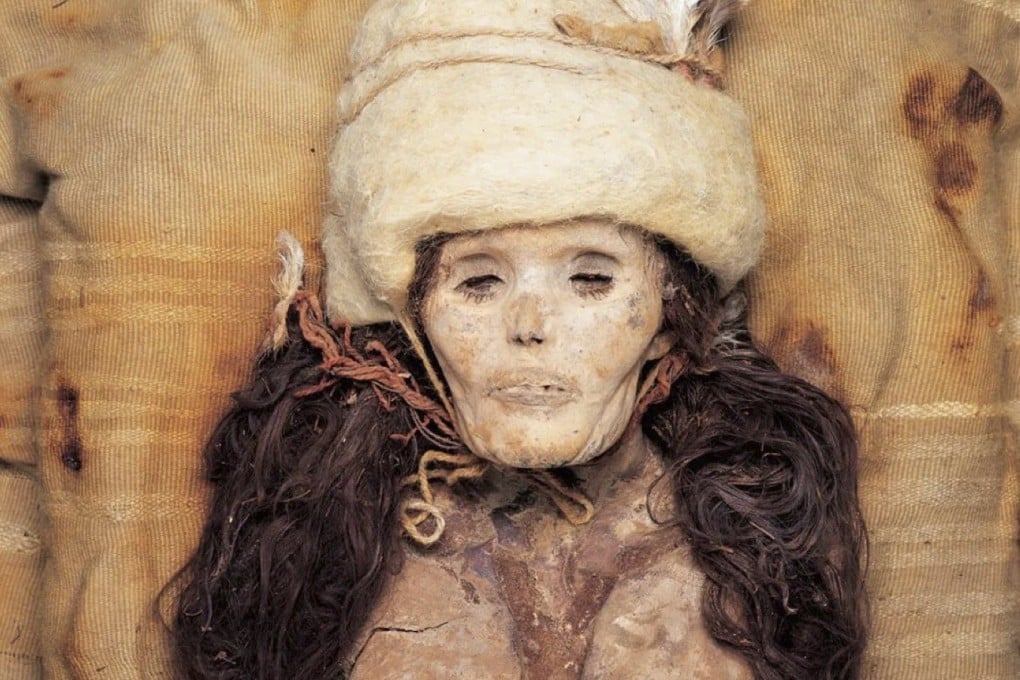Advertisement
Xinjiang mummies’ origins closer to home than we thought, study finds
- Earliest human remains found in the Chinese region to date are descended from an ancient Asian population, according to international research
- The 4,000-year-old bodies discovered in boat coffins have confounded scientists for decades
Reading Time:3 minutes
Why you can trust SCMP
6

Bronze Age mummies found buried in a barren desert in Xinjiang in western China were descended from an ancient Asian population, not newcomers to the region as previously suggested, according to a new study.
An international team of researchers found that the Tarim Basin mummies were direct descendants of the Ancient North Eurasians, a once widespread population that had largely disappeared by the end of the last Ice Age.
The genetic origins and ancestry of 4,000-year-old naturally mummified bodies discovered in boat coffins has puzzled scientists for decades because of their distinct Western-like appearance, clothing and apparent farming practices involving cattle, wheat and kefir cheese.
The Tarim Basin mummies in what is now southern Xinjiang were once thought to be Indo-European-speaking migrants from the West. Some thought that their ancestors migrated from what became southern Siberia, northern Afghanistan or the Central Asian mountains.
“The identity of the earliest inhabitants of Xinjiang, in the heart of inner Asia, and the languages that they spoke have long been debated and remain contentious,” wrote the team of 34 researchers from China, Germany, South Korea and the United States in peer-reviewed journal Nature on Wednesday.
Advertisement
